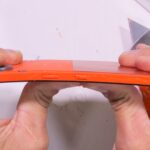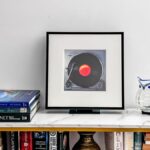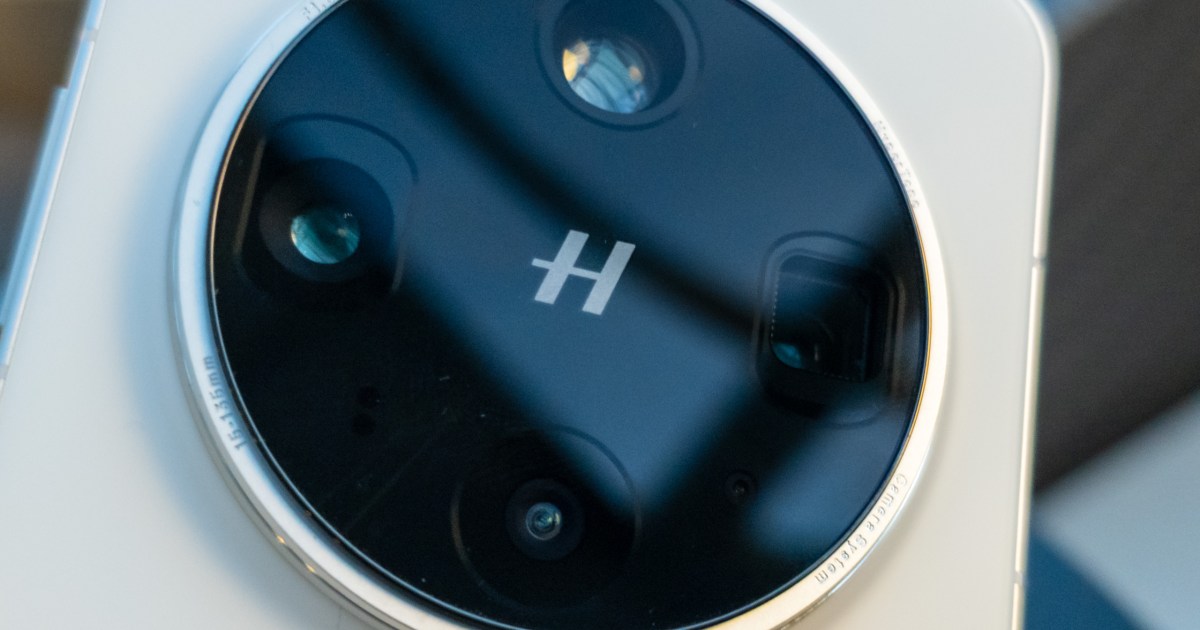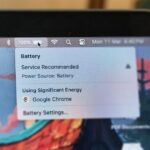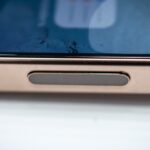Oppo Find X8 Ultra
MSRP $900.00
“The Oppo Find X8 Ultra is nothing short of incredible. It features outstanding battery life, extremely fast performance, and a penta-camera that’s in a class of its own. There’s just one problem: you can’t buy it outside of China.”
Pros
- Excellent battery life and fast charging
- Smooth performance
- Vibrant display
- Outstanding main camera
- Fantastic zoom performance
- Secondary lenses are amongst the best in industry
- IP68 / IP69 ingress protection
Cons
- Not available outside China
- A few preloaded apps can’t be removed
The term Ultra has quickly become a way for companies to showcase their best smartphone innovations across all the areas that matter to customers. Made popular by Samsung with the Galaxy S20 Ultra, almost every company has launched an Ultra competitor in the five years since, yet most of these aren’t sold in Western markets.
Samsung’s latest Galaxy S25 Ultra and rival devices like the Xiaomi 15 Ultra and Vivo X100 Ultra all share a few characteristics: the best cameras, large displays, big batteries, and a premium overall experience.
It’s against this backdrop that Oppo launched the Oppo Find X8 Ultra last week. Having spent almost two weeks with Oppo’s new flagship phone, I’m convinced it sets a new standard for all Ultra phones to match. There’s just one key problem: it’s only launching in China. The flip side? It does so at a very economical price. Here’s why it’s the new standard-bearer for Ultra phones.
Oppo Find X8 Ultra Specs
| Oppo Find X8 Ultra | |
| Dimensions | 163.1 x 76.8 x 8.8 mm |
| Weight | 226 grams |
| Screen | 6.82-inch AMOLED, 1440 x 3168 pixels, 120Hz refresh rate, 1600 nits High Brightness Mode, 2500 nits peak brightness |
| Processor | Qualcomm Snapdragon 8 Elite 8-core |
| RAM and storage | 12GB/256GB, 16GB/512GB, 16GB/1TB |
| Camera | 50MP main, 1-inch sensor, f/1.6 aperture, OIS, 1.6µm
50MP telephoto for 3x optical zoom, 10cm — ∞ macro mode, OIS, 1.0µm, f/2.1 50MP telephoto for 6x optical zoom, OIS, 0.8µm, f/3.1 50MP ultrawide, 120° field of view, 0.64µm, f/2.0 2MP True Chroma sensor 32MP selfie camera, f/2.4, 0.8µm |
| Durability | IP68, IP69 |
| Battery and charging | 6,100mAh, 100W wired SuperVOOC, 50W magnetic wireless with additional case |
| Software | Android 15 with ColorOS 15 |
| Price | 6,499 RMB (~$900) |
Oppo Find X8 Ultra design

I used the Oppo Find X7 Ultra extensively last year, and it was one of my favorite phones. While it featured a few key issues, it was distinct and stood out from the crowd. Much of this was due to the unique two-tone finish, with Oppo blending a glass back with a gorgeous leather finish and unique flourishes around the camera housing.
This distinct design language was continued from the Oppo Find X6 Pro before it, but unfortunately, the Find X8 Ultra drops this unique finish in favor of a more commonplace matte glass finish. However, it also shaves 0.7mm off the thickness and slims down the sizeable camera bump.

At first, I was disappointed by the lack of a leather finish, and while I still am somewhat disappointed, the slimmer design makes the phone far more user-friendly. It’s a welcome trade-off, even though I would have loved to have had it all.
The Oppo Find X8 Ultra is five grams heavier than the Find X7 Ultra, but the slimmer camera bump means the weight is more evenly distributed, and it doesn’t feel as top-heavy. Like the Oppo Find N5, it also features flat edges, which means it can stand upright. These changes bring it more in line with the industry as a whole.

The power and volume keys are on the right, and beneath it is the recessed camera control slider from the Oppo Find X8 Pro. Unlike that device, however, the camera control is improved with better travel, although the positioning means you’ll often inadvertently zoom in and out when using the camera. I quickly disabled the zoom function, leaving it as a user-friendly camera shutter button that works as expected.
The biggest addition to the hardware is on the left in the form of the new shortcut button. Like the OnePlus 13, the Find X8 Ultra drops the trademark alert slider in favor of a multipurpose user-customizable button that can be set to launch directly into an app, activate a shortcut, or launch directly into specific features inside an app. As I’ve discovered while traveling in China the past week, Oppo’s implementation is my new favorite for one key reason, but more on that below.

In addition to removing the leather from the Find X7 Ultra, the X8 Ultra also removes the unique ridged edges around the camera housing that had become synonymous with Oppo’s Ultra lineup. However, the Find X8 Ultra retains the lens positioning indicator found on all cameras with interchangeable lenses.
The Oppo Find X8 Ultra is 1.2mm shorter and 0.6mm wider than the Find X7 Ultra, making it far easier to use in one hand. It’s slightly taller than the Galaxy S25 Ultra but narrower by 0.8mm, making it more ergonomically friendly than Samsung’s latest flagship. Overall, the Find X8 Ultra feels extremely polished as a phone, and it’s ergonomically friendly, even though it lacks some of the flourishes we’ve come to expect from Oppo’s Ultra lineup.
Oppo Find X8 Ultra Display

The Find X8 Ultra display is identical in size and features to the Find X7 Ultra and the OnePlus 13, but it has a slight downgrade in peak brightness on paper.
All three devices feature the same 6.82-inch LTPO AMOLED display with a 120Hz dynamic refresh rate and Dolby Vision support, but the Find X8 Ultra peak brightness measures 2,500 nits, whereas the other devices feature a 4,500 nits peak brightness. Like the OnePlus 13 — but not the Find X7 Ultra — there’s also support for the Ultra HDR and HDR Vivid standards.
Despite the downgrade on paper, the Find X8 Ultra display has proven to be bright enough to be legible in most lighting conditions over the past two weeks, especially under bright sunlight. There will be scenarios where the OnePlus 13 and Find X7 Ultra are brighter and more legible, but the Find X8 Ultra has proven more than capable in my testing.
Oppo Find X8 Ultra Hardware & Performance

In many ways, the Find X8 Ultra is the OnePlus 13 with a more capable camera. Both devices use the latest Snapdragon 8 Elite processor, and unlike the Find N5, it’s the fully-fledged 8-core version. This is paired with either 12GB or 16GB of RAM, depending on your storage, and having used the latter, it’s an extremely performant device.
Over the past two weeks, I’ve had zero lag or slowdowns. Like all Oppo and OnePlus devices, it’s incredibly smooth, even with many apps running simultaneously. This is helped by UFS 4.0 storage, which ensures that reading and writing to the ROM isn’t a cause of any potential lag.

The Find X8 Ultra supports a range of wireless protocols, such as Wi-Fi 7, Bluetooth 5.4, and multiple GPS positioning technologies. The under-display ultrasonic fingerprint sensor is faster and better than the optical sensor used by Samsung, and satellite messaging is available if you buy the Satellite Edition version that includes this feature.
The Find X8 Ultra features flagship performance in real-world testing, but how does it stack up in two popular benchmark tests? These won’t tell the full story but indicate performance under heavy loads and help us quantify the differences between devices.
| GeekBench 6 | CPU Single-core | CPU Multi-Core | GPU |
| Oppo Find X8 Ultra | 2987 | 9362 | 17975 |
| OnePlus 13 | 3016 | 9218 | 17607 |
| Galaxy S25 Ultra | 2974 | 9475 | 17776 |
| Oppo Find N5 | 2831 | 7912 | 13875 |
Our first test is GeekBench 6, a great way to test a chipset and phone combination’s single-core, multi-core, and GPU performance under different loads.
In this test, the Find X8 Ultra is as capable as the competition and features the same 8-core Snapdragon 8 Elite processor. While the CPU scores are slightly lower, the Find X8 Ultra has the best overall GeekBench 6 GPU score of any Qualcomm phone we’ve tested. It’s worth noting that the GPU scores don’t compare to devices like the iPhone 16 Pro Max (33174) and even Oppo’s Find X8 Pro (20522), with the latter being powered by the MediaTek Dimensity 9400 vs a Snapdragon 8 Elite.
| 3DMark | Solar Bay | Stress Test | Battery Drain |
| Oppo Find X8 Ultra | 11953 | 11901 | 10% |
| OnePlus 13 | 11774 | 10500 | 17% |
| Galaxy S25 Ultra | 12119 | 11774 | 13% |
| Oppo Find N5 | 9333 | 9156 | 9% |
What about our second test? For this test, we use 3D Mark’s Solar Bay testing suite to help quantify the gaming performance, and again, the Find X8 Ultra proves to be as capable as the competition. The single score is on par with the Galaxy S25 Ultra, which features an overclocked custom version of the chipset designed for Galaxy devices.
However, the second part of the test shows that the Find X8 Ultra is a league apart from rival devices that use the same processor. In the loop test, 3DMark runs the same test for twenty minutes, which indicates the impact on battery life.
Every device we’ve tested with the Snapdragon 8 Elite has been extremely power-hungry, and while the Find X8 Ultra proves to be as powerful, it is also far more efficient. In this test, the Find X8 Ultra consumes considerably less power than the Galaxy S25 Ultra and the OnePlus 13. The net effect is that it features flagship performance but does so more efficiently than other devices with the same processor.
Oppo Find X8 Ultra Battery

Efficiency is a key part of the overall Ultra experience, and battery life is where the Oppo Find X8 Ultra shines. The large 6,100 mAh battery features the best battery life on a Snapdragon 8 Elite phone I’ve tested.
The second-generation Silicon Carbon technology proves again that every phone maker needs to adopt this technology going forward.
Across the past two weeks, the Find X8 Ultra has offered multi-day battery on all but one occasion. As you can see in the video, this was when I tested the camera extensively in China, but using the camera with the display at full brightness for several hours is not my normal usage pattern. The following day, it had considerably better battery life, lasting 30 hours in total, despite almost six hours of screen on time and considerable camera usage.

When using the phone as I normally would — i.e., when not heavily testing the camera — the Find X8 Ultra has proven to be a battery champion. It regularly lasts a full day with plenty to spare, and most people can achieve a two-day battery life with at least six to seven hours of screen time. It’s better than the Galaxy S25 Ultra and most other phones, and it’s only rivaled by the OnePlus 13.
Like most Oppo and OnePlus phones, the Oppo Find X8 Ultra is also equipped with extremely fast charging. Aside from a Realme phone, it also has the quickest charging I’ve experienced on a phone, thanks to the 100W SuperVOOC charger included in the box.

A full charge takes around 36 minutes, even faster than the OnePlus 13, which takes around five minutes longer. However, that doesn’t reveal the full picture, as the battery on the Find X8 Ultra is also slightly larger than the OnePlus 13. Adjusting this to account for these differences gives us a standardized charging speed of 170 mAh per minute.
By comparison, the OnePlus 13 is slightly slower at 168 mAh per minute. What about the 45W charging on the Galaxy S25 Ultra? It is half the speed of the Find X8 Ultra and takes an hour to charge to full, equivalent to around 85 mAh per minute.

What if you need a quick top-up? A five-minute charge will get you to 24%, while a 15-minute charge will add roughly 62% to the battery. The latter is more than enough for a full day’s usage, but it’ll take an additional five minutes to reach 80%. This is on par with the OnePlus 13 and, again, much faster than the Galaxy S25 Ultra, which charges roughly 40% in 15 minutes and 70% in 30 minutes.
Oppo Find X8 Ultra Camera

The Oppo Find X8 Ultra shares many features with the OnePlus 13, but where it stands out from the rest of Oppo and OnePlus’ lineup is in the cameras. Simply put, this is the best camera setup on a phone. I’ve been astounded by its performance, whether at different focal lengths, recording video, or capturing accurate colors.
The Find X8 Ultra features four 50MP sensors, including a 50MP main sensor paired with a 50MP ultrawide and two 50MP zoom lenses. An additional 2MP True Chroma sensor ensures better color reproduction across all lenses. After testing it for two weeks, I love the Find X8 Ultra camera.
Like many Ultra phones, the main camera features a large 1-inch sensor that lets in a lot of light. It’s considerably larger than the 1/1.3” 200MP sensor used in the Galaxy S25 Ultra, and it’s the same size sensor found in more professional cameras like the Osmo Pocket 3. It’s fantastic to use and is rich in detail, capturing great photos in all lighting conditions.
This is paired with a 50MP ultrawide sensor with an f/2.0 aperture and phase detection autofocus. The ultrawide is perfectly fine, but it’s the least capable of the four cameras. Unless you need the wide 120° field-of-view to capture a particular scene, it’s not the camera I would opt for. It also proves extremely capable, even in low light, where many phones traditionally struggle.
Over the past two years, Oppo and OnePlus have proven that you don’t need multiple telephoto lenses to capture excellent photos at long focal lengths, and the Find X8 Ultra takes this a big step further.
The Find X8 and OnePlus 13 both feature a single periscope telephoto lens that supports 3x optical zoom, yet thanks to AI processing, they can take great photos even at 60x zoom. The Find X8 Pro added a second periscope lens with 6x optical zoom and proved more capable than its siblings, while the X8 Ultra goes even further.
- 1.
0.5x - 2.
1x - 3.
2x - 4.
3x - 5.
6x - 6.
10x - 7.
20x - 8.
30x - 9.
60x - 10.
120x
It features two 50MP periscope cameras, one capable of 3x optical zoom and the other 6x optical zoom. The former also features a new macro mode that lets you capture a subject at just a 10cm distance, and photos captured in this mode are rich, vibrant, and high-quality. What if you want to capture something at a further distance? Even at the maximum 120x focal length, the Find X8 Ultra takes outstanding photos in all lighting conditions, and this will be the camera phone I turn to when I want to capture lifelong memories.
- 1.
0.5x - 2.
1x - 3.
2x - 4.
3x - 5.
6x - 6.
10x - 7.
20x - 8.
30x
The Find X8 Ultra also supports 4k recording at 120 frames per second, although the update that enables this feature hasn’t landed on my Find X8 Ultra yet. It can also capture HDR and 10-bit video, as well as Dolby Vision content. It doesn’t have all the professional video features on the iPhone 16 Pro Max, but videos are stable and high quality.
- 1.
3x portrait - 2.
3x portrait - 3.
6x portrait - 4.
3x portrait - 5.
2x portrait - 6.
3x portrait - 7.
1x portrait - 8.
6x portrait - 9.
3x portrait - 10.
3x portrait - 11.
6x portrait - 12.
3x portrait
One particular change I’ve noticed is how fast the autofocus is on the Find X8 Ultra. While recording videos, taking photos, or using portrait mode, the Find X8 Ultra rapidly focuses on a subject and can quickly change between different subjects in a video. The overall video recording is outstanding, and the fast autofocus ensures it’s a video you’ll want to share with your friends and family.
Four cameras aren’t unique on an Ultra phone, but the addition of the True Chroma sensor makes the Find X8 Ultra unique. One of the biggest challenges most phone cameras face is adjusting to different lighting and colors within a scene. Rather than apply a single color temperature (measured in Kelvin) across the entire scene, the True Chroma sensor captures detail across nine zones in the image.
Selfies captured by the 32MP front facing camera
The True Chroma sensor ensures the Find X8 Ultra can apply up to 40 different color temperatures in a single photo. It delivers in most photos, although sometimes it can still struggle with harsh or strange lighting in the background or off to the side.
Oppo combines outstanding hardware with AI to take phenomenal photos at every focal length. In doing so, the Find X8 Ultra has become my new favorite smartphone camera bar none.
Oppo Find X8 Ultra Software

The Oppo Find X8 Ultra runs Color OS 15 on top of Android 15, and like the Find X8 Pro, it’s heavily customizable yet extremely user-friendly out of the box. The biggest surprise, however, is that I’m using the Chinese ROM, and aside from a few features, most of the Chinese preloaded apps and services can be completely uninstalled.
Like every device sold in China, there’s no official support for Google apps or services, but there are also some easy workarounds. If you copy your data from another Oppo or Oneplus device, it’ll also bring over the Play Store, but if you set it up as new, you can easily enable it from within the settings menu. Once done, you get a software experience that works almost the same as a device sold globally.
However, there are nuances to this. There’s no easy way to install Google Discover on your home screen, and there’s no way to launch Gemini easily. Many other Gemini features like Circle-to-Search also aren’t available, so there’s a difference in the experience compared to other Android phones. Similarly, many preloaded local services for China can’t be disabled, but these don’t affect the overall experience. If you look past these, you’ll have an experience close to the global version of the Find X8 Pro I reviewed.
The best shortcut button implementation

My favorite software feature is the shortcut button, and Oppo has the best implementation of this on any phone, including the iPhone. The shortcut button replaces the alert slider used previously and allows you to change various settings or launch directly into different features in an app.
You can replicate the alert slide by pressing and holding the button to switch between ring, vibrate, and silent modes. You can quickly enable or disable Do Not Disturb mode, launch the camera into a specific mode, activate the flashlight, start or stop voice recordings, or capture a screenshot.

All of these are fairly common, but what sets the Find X8 Ultra apart is Oppo’s Translation app. Simply put, it’s a feature that every phone should have.
I don’t speak Mandarin, but the shortcut button can be used to quickly launch into conversation mode, which makes it effortless to converse with someone in Mandarin just by pressing and holding the button. You can launch into other modes in the translation app, but I’ve found this feature to be the most effective, especially when traveling in China for the past ten days.

The translation app also stores the history of your conversation. It displays the translated text in English and local characters, and you can easily play an audio recording of the translated text. If you travel a lot but struggle to understand different languages, this is the best translation app, bar none. It’s far more useful than even Google Translate, and I’ll keep the Find X8 Ultra with me when I travel for this feature (as well as the camera).
I’ve been very surprised by how clean the Chinese ROM is on the Find X8 Ultra. Aside from a few specific nuances, it’s a Chinese smartphone that could easily be launched in global markets. It’s the first Chinese device I’ve used that is this polished, and the ability to remove almost all of the preloaded apps (around 27 out of ~33) means this is suitable for all users, regardless of where they live.
Oppo Find X8 Ultra price and availability

The Find X8 Ultra has much to offer, but given the price of other Ultra phones, you would likely expect it to come with a high price tag. I had expected this before the official launch event, especially considering last year’s Find X7 Ultra was expensive.
However, the Find X8 Ultra is a surprise for more reasons than one. It won’t be sold globally but starts at just ¥$6,499 in China ($891) for the 12GB/256GB model. The 16GB/512GB version costs ¥$6,999 ($959), and the 16GB/1TB model is ¥$7,999 ($1,096).
The Find X8 Ultra proves that an Ultra phone doesn’t have to cost a fortune
A better comparison is the UK pricing, with the 12GB/256GB model converting to around £670, compared to the Galaxy S25 Ultra, which starts at $1,299 or £1,249. Of course, it’s not a direct comparison, but the Find X8 Ultra proves that an Ultra phone doesn’t have to cost a fortune.
The Oppo Find X8 Ultra is the new best Ultra phone

The Oppo Find X8 Ultra is the most surprising non-folding phone this year.
Like most Oppo phones, it delivers excellent battery life and performance, but it also features the best camera on an ultra phone and several unique features. The Find X8 Ultra camera is in a class of its own, and the True Chroma sensor is a feature I hope will be used on more phones. Then there’s the software, and it’s the first time a Chinese ROM has felt so polished and similar to a global ROM.
The Find X8 Ultra camera is in a class of its own.
The biggest surprise is the price. Even with additional margin added by third parties, you can buy it right now for around $1,000. For that, you’ll get the best Ultra phone in 2025 and my favorite camera phone to boot.
Yes, it isn’t launching globally, so you’ll need to import it rather than buy it from an established local retailer, but it’s the first time I wouldn’t hesitate to recommend doing so. It’s the best Oppo phone ever made and one of the best phones you can buy now.
Read the full article here


